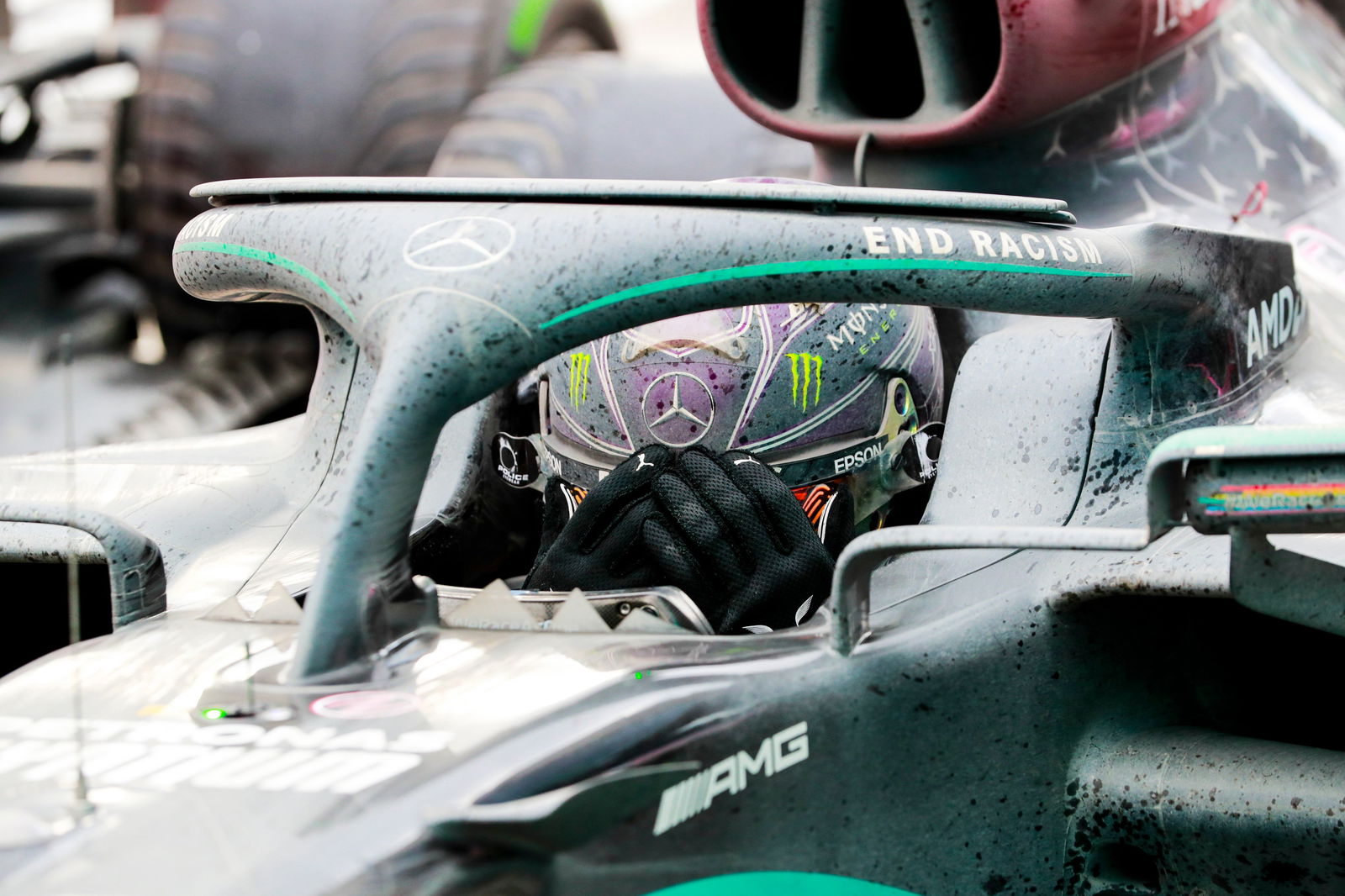How Lewis Hamilton equalled F1’s greatest-ever record

Lewis Hamilton has become the joint-most successful Formula 1 driver of all time, having wrapped up his seventh world championship at the Turkish Grand Prix.
Hamilton has now equalled the great Michael Schumacher’s all-time record of seven drivers’ world title - a feat many considered to be unreachable when he claimed his final world championship crown in 2004 with Ferrari.
But six world championship triumphs in seven seasons with Mercedes - including four on the bounce - since the start of the V6 hybrid era in 2014 have propelled Hamilton to the brink of standing alone as the most successful driver in history
Hamilton, who already holds the record for most grand prix wins and pole positions, needs just one more title to eclipse the benchmark he now shares with Schumacher.
We’ve charted the Briton’s remarkable 14-season journey to becoming a seven-time F1 world champion…
A record-breaking first crown
After just missing out on winning the world championship in his rookie F1 season with McLaren in 2007, Hamilton made amends the following year by pipping Ferrari’s Felipe Massa to the crown by a single point in a nail-biting finale in Brazil.
Hamilton made the perfect start to his campaign with victory in the Melbourne season-opener, before breaking a run of four successive Ferrari wins with his maiden Monaco victory, despite picking up a puncture when he clattered the barriers in wet conditions.
Back-to-back wins halfway through the campaign proved key as Hamilton followed up arguably his greatest ever drive - a dominant display on home soil at Silverstone - with another visit to the top step of the podium in Germany.
Despite being stripped of victory at the Belgian Grand Prix and enduring disappointing races in Italy and Japan, Hamilton fought back to win in China and set up a stunning showdown in Brazil.
Hamilton grabbed the fifth place he needed at the last corner of the last lap to become F1’s youngest ever world champion by the skin of his teeth.

Doubling up after a long wait
Hamilton had to wait six years for his next title success following a number of unsuccessful championship campaigns with McLaren, but a bold switch to Mercedes ahead of a major engine regulation change for 2014 paved the way for a remarkable glory run.
Things did not start off perfectly with a retirement at the Australian Grand Prix as Hamilton immediately conceded 25 points to Mercedes teammate Nico Rosberg, but he fought back in comprehensive fashion with a streak of four successive victories.
A battling drive earned him a second win at Silverstone, which was sandwiched by another pair of retirements in Canada and Belgium, but Hamilton again showed his steel by following up his DNF at Spa with five wins on the trot.
A second world championship crown was clinched with a comfortable victory in the season-ending Abu Dhabi Grand Prix as Rosberg suffered car trouble and limped home to 14th.
Hamilton claimed a total of 11 wins across the season, compared to Rosberg’s five, and ultimately finished 67 points clear at the top of the drivers’ standings en route to becoming only the fourth Briton to win two world titles at the age of 29.
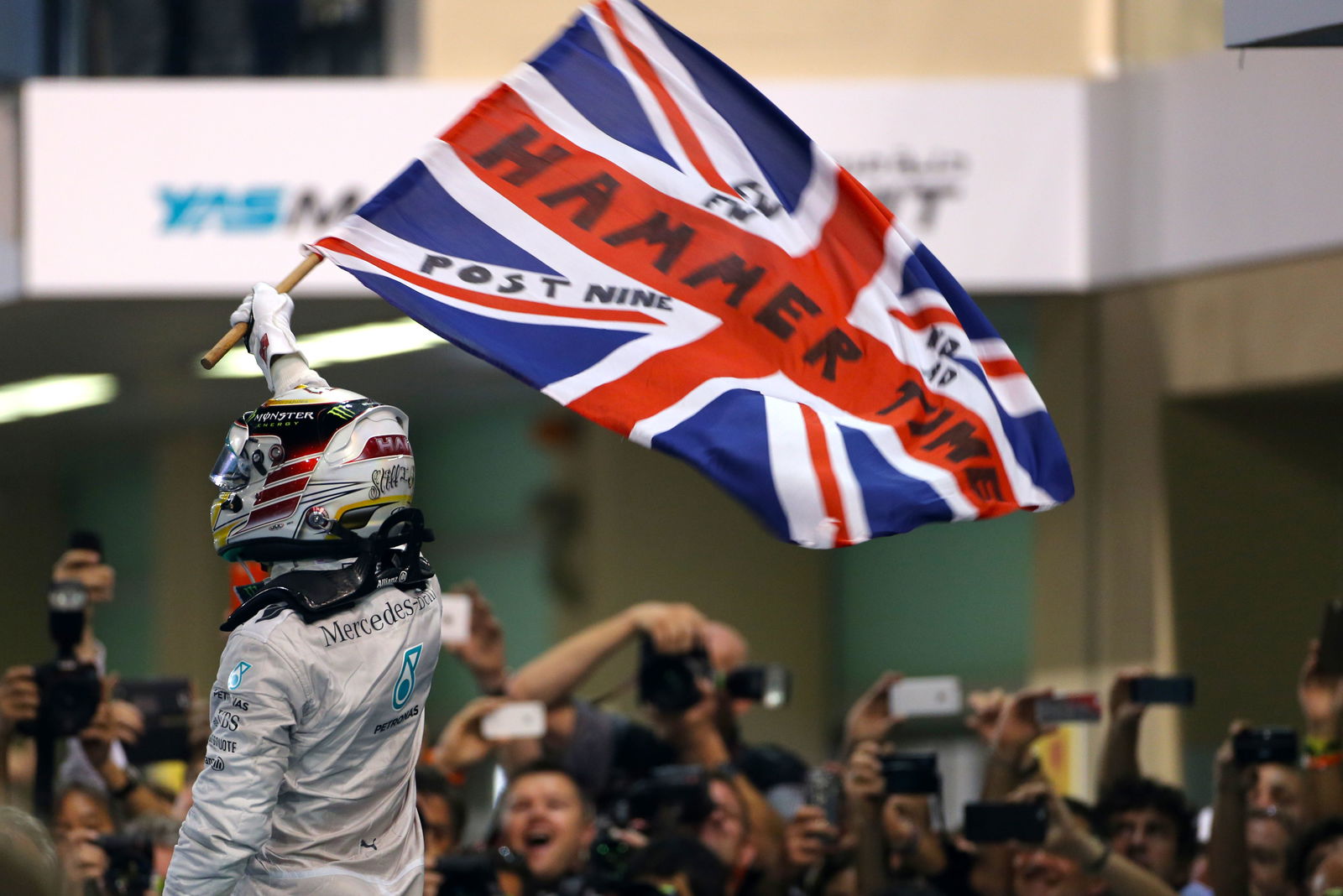
Matching boyhood hero Senna
Three wins from the opening five races of the season put Hamilton in the pound seat for the title in the next head-to-head against Mercedes teammate Rosberg.
A strategic error in Monaco left Hamilton rueing what looked certain to be a second win on the streets of Monte Carlo as Rosberg threatened to claw back some momentum, but Hamilton maintained his superiority at the top of the standings with more victories in Canada and Great Britain.
Budapest proved to be Hamilton’s low point of 2015 as he finished sixth in an error-strewn race, yet in the most unlikely circumstances, the Briton was still able to extend his lead over Rosberg after the German finished eighth following a late puncture.
A strong second half of the season - including five wins in six races - followed, as Hamilton teed himself up to take the title with three races to spare in the United States.
Hamilton won a thrilling encounter in Texas after pressurising Rosberg into a mistake to notch up his 10th and final victory of the season to join his boyhood idol Ayrton Senna on three world titles.
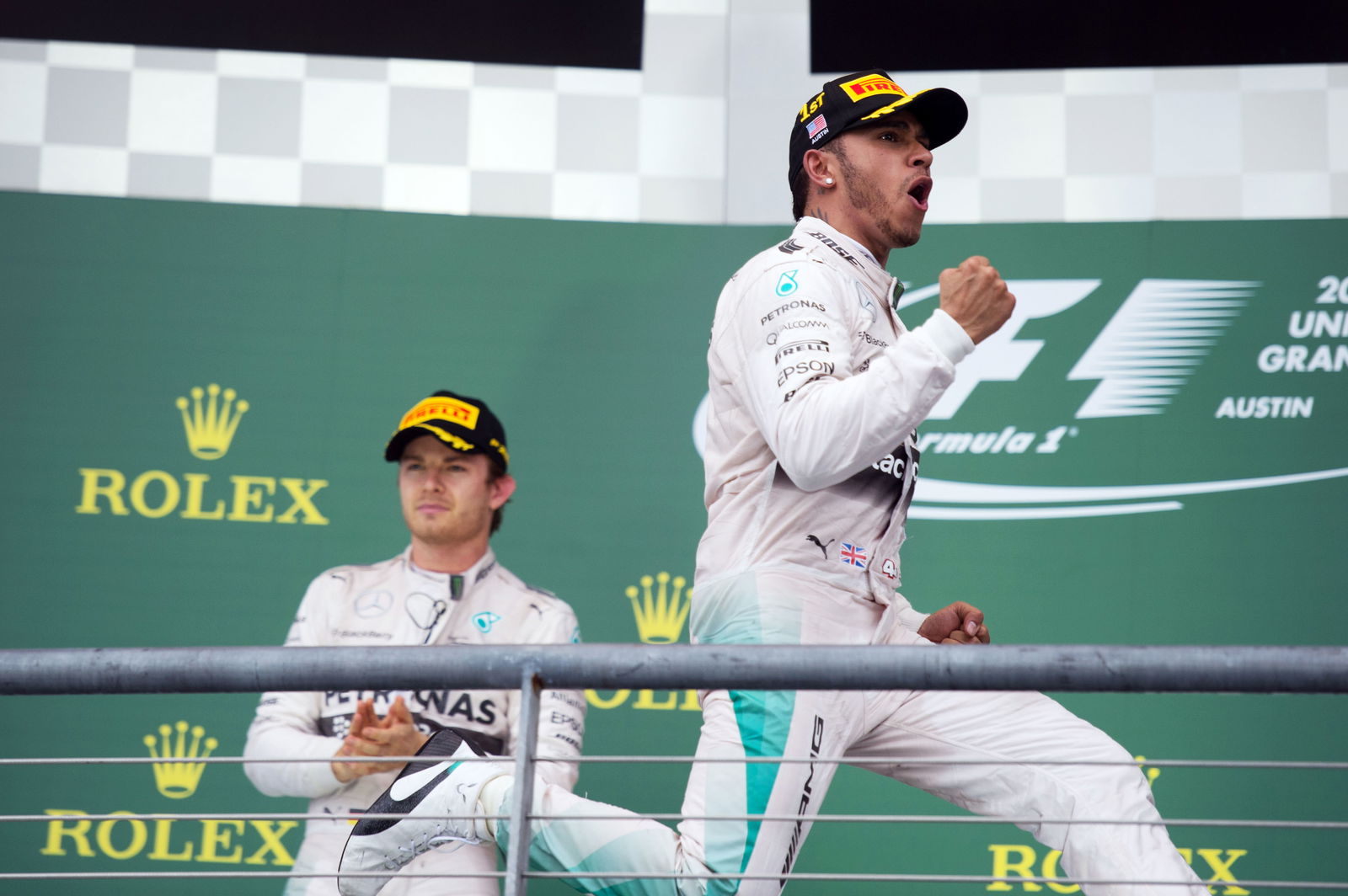
Bouncing back for title number four
Following his narrow defeat to Rosberg in 2016 - and the German’s subsequent retirement from the sport - Hamilton found himself with a new title rival in the shape of Sebastian Vettel and a reinvigorated Ferrari.
The first half of 2017 proved to be a ding-dong battle with Vettel as the pendulum of momentum swung back and forth between the Ferrari and Mercedes camps, with Vettel and Hamilton sharing three wins apiece from the opening seven rounds.
After a dramatic, heated clash under the Safety Car during a bonkers race in Baku, the wave of momentum gradually started to turn in Hamilton’s favour.
Hamilton closed to within a point of Vettel with a fourth successive triumph at Silverstone and took the outright championship lead for the first time in the season with a dominant victory in the Italian Grand Prix three races later.
Five wins from the final nine races of the season, coupled with a series of mistakes and reliability issues leading to a total capitulation from Vettel, saw Hamilton ease to his fourth world title which he sealed in Mexico despite finishing ninth.
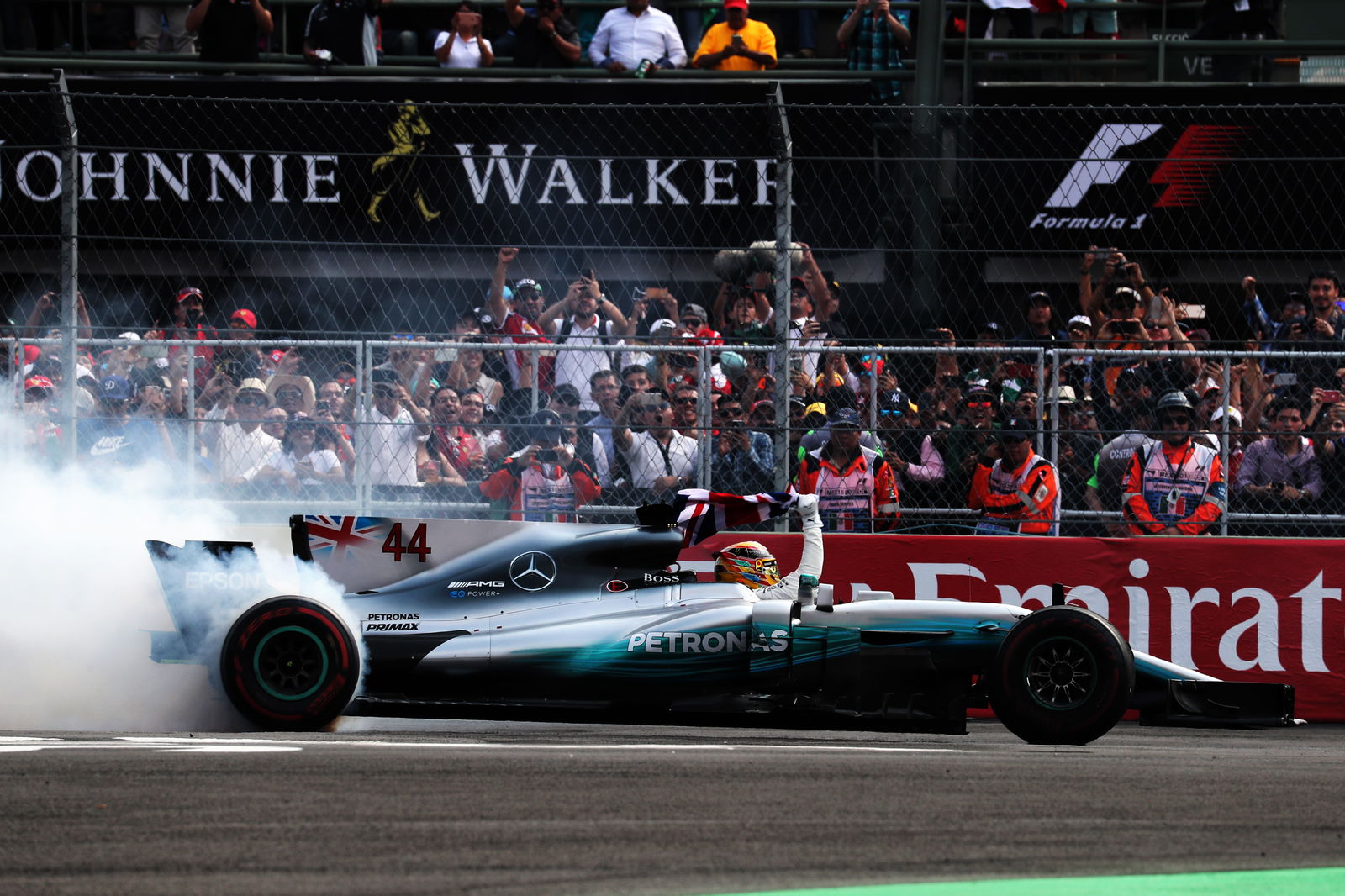
The tango to match Fangio
Ferrari and Vettel once again proved to be Hamilton’s greatest foe a year later as the Scuderia looked to hit back following a disappointing end to its 2017 campaign.
Vettel and Hamilton duelled it out in a fight to become the joint-second most successful driver of all time with a fifth world championship to match the achievements of the revered Juan Manuel Fangio.
Vettel again held the early advantage after taking back-to-back wins in Australia and Bahrain, but Hamilton fought back with wins in Azerbaijan and Spain, while Vettel made his first significant blunder of the year by locking up while fighting Bottas for the win in Baku late on. The mistake ultimately opened the door for Hamilton to capitalise.
Vettel regained control as Hamilton retired in Austria and was forced into a Silverstone fightback after being sent into a spin on the first lap by Kimi Raikkonen, before Vettel crumbled under pressure on home soil at Hockenheim.
The German blew the chance to pull clear in the title race by crashing out late on, while Hamilton remarkably charged to an unlikely victory from 14th on the grid, enjoying a 38-point swing in the process.
Errors would be a trademark that blighted Vettel’s 2018 campaign, as Hamilton beat both Ferraris in wheel-to-wheel combat to inflict a sore defeat on the Scuderia at Monza, a result which sparked a run of four successive wins.
Hamilton ultimately clinched the title in Mexico for the second year running with a fourth-place finish proving enough to move within two titles of Schumacher.
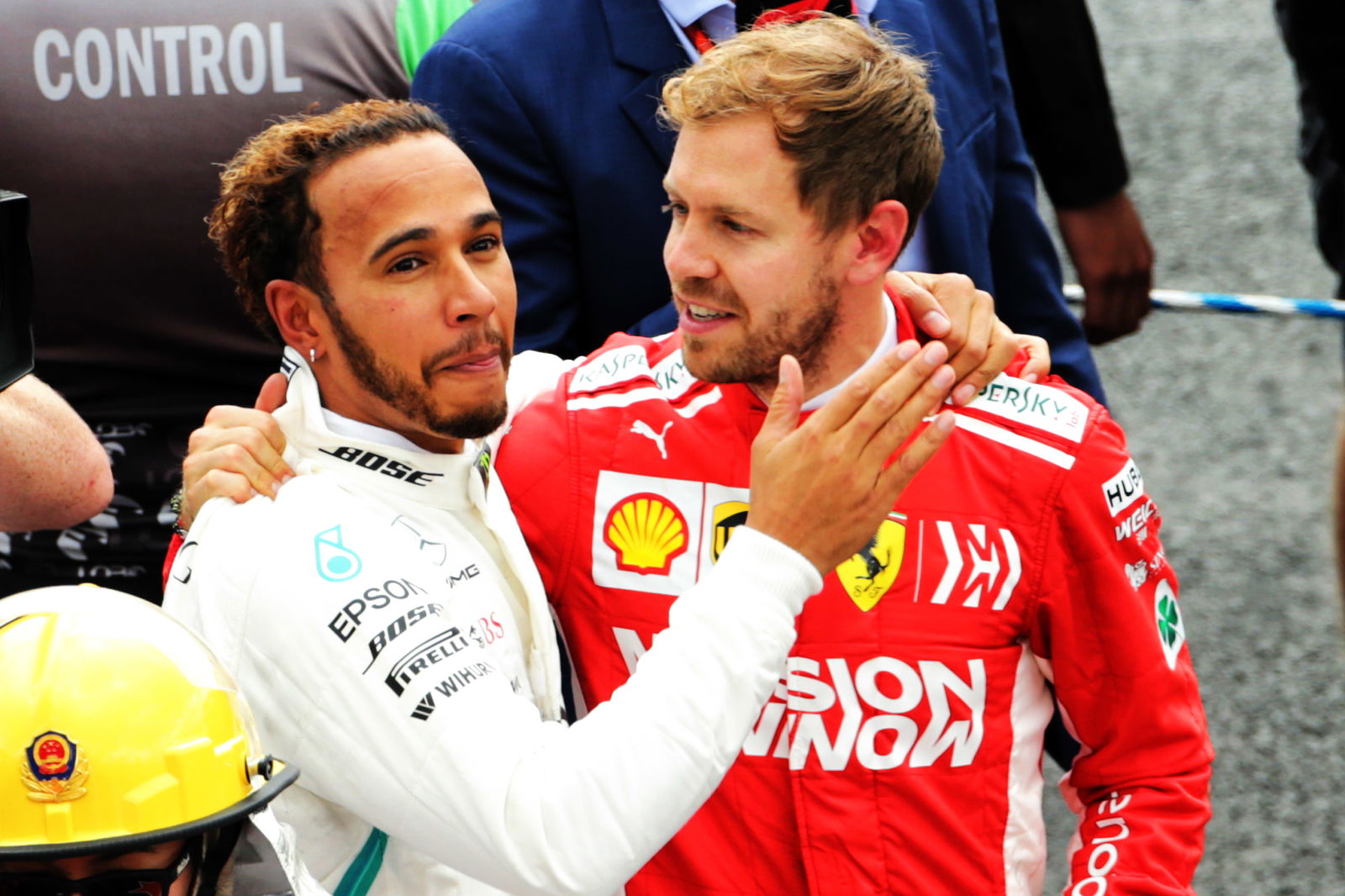
Three in a row to go second overall
Valtteri Bottas bounced back from a winless 2018 with renewed confidence, winning the opening round in Australia as Mercedes enjoyed a dominant start to the 2019 season.
The Finn led the championship after the first four races having picked up a second win in Baku, but Hamilton turned in a commanding streak of four successive wins at the start of the European leg of the campaign to take control at the top.
After winning the first eight races of the season, victories were few and far between for Mercedes amid a Ferrari and Red Bull resurgence following the summer break, but Hamilton was still able to rack up three further wins in Russia, Mexico and Abu Dhabi to take his season’s victory tally to 10.
Hamilton sealed his sixth drivers’ world title with second place in the United States Grand Prix to become the outright second-most successful F1 driver of all time, one championship behind Schumacher.

A dominant seventh
Hamilton’s latest championship triumph did not get off to the greatest of starts as he finished fourth during an uncharacteristically sloppy opening weekend in Austria, with Bottas getting off the mark quickest for the second season in a row with the first victory of an unprecedented year disrupted by the coronavirus pandemic.
But Hamilton returned to form in typically commanding fashion by winning the next three races, including a seventh career victory at Silverstone in extraordinary circumstances after suffering a puncture on the last lap.
Hamilton three-wheeled his Mercedes across the line, while Bottas dropped out of the points after he too sustained a late tyre failure during a dramatic conclusion to the race.
Red Bull’s Max Verstappen got the better of the Mercedes duo at the second race to be held at Silverstone a week later, but Hamilton claimed his fourth and fifth wins of the year at the next two events in Spain and Belgium.
Both Mercedes drivers finished off the podium for the first time during a crazy Monza race which heralded a shock winner in the shape of AlphaTauri’s Pierre Gasly, before normality resumed with Hamilton back on the top step on F1’s first visit to Mugello.
Bottas hit back in Russia to take his second win of 2020 as Hamilton finished third behind Verstappen, but it was only a brief pause to his superiority.
Hamilton matched Schumacher’s wins record, and then surpassed it with a trio of victories in Germany, Portugal and Italy to set up his charge to a record-equalling seventh title, which he wrapped up in Turkey with three races left to run.
